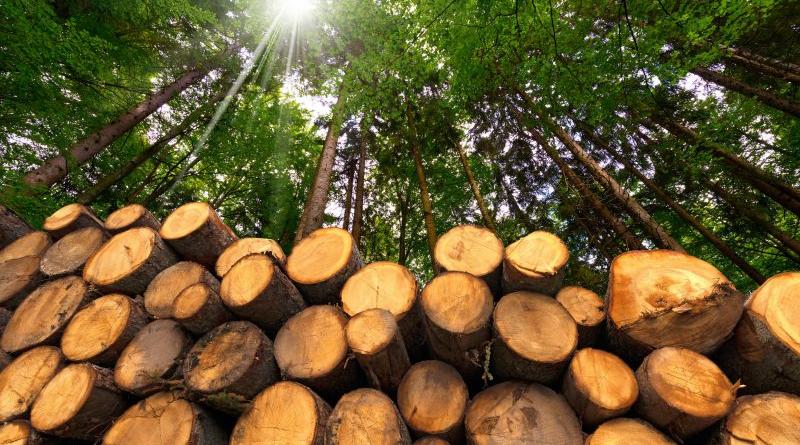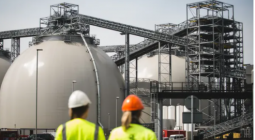Biomass fight leaves EU renewable energy talks in a deadlock

The European Commission made an unsuccessful attempt to bridge divisions over forest biomass between the Parliament and EU countries during talks held earlier this week to revise the EU’s renewable energy directive.
Lawmakers in the European Parliament backed plans in September to exclude “primary woody biomass” from the EU’s renewable energy targets, arguing that Europe needs to regrow its carbon sinks in the fight against climate change.
That raises concern among EU member countries, which support a looser definition allowing them to make decisions based on local circumstances.
“On biomass specifically, member states were generally reluctant towards the proposal of the Parliament on the definition of ‘primary wood biomass’,” said an EU institution official with knowledge of the discussion.
Instead, EU countries suggested limiting the definition of primary woody biomass to “quality roundwood,” in line with the ‘cascading principle’ which allocates biomass in priority to wood-based products with the highest economic value.
“Member states have been clear that the new definition of ‘primary woody biomass’ according to the EP’s proposal is not acceptable,” says a paper from the Swedish presidency of the EU Council, representing the bloc’s 27 member states in the negotiation.
Deadlock
Three-way talks between the European Commission, Council and Parliament resumed on Tuesday (14 February) but quickly ended in deadlock due to persistent disagreements over biomass, according to several people who took part in the meeting.
“The Commission looked for a middle ground between the Parliament’s ‘primary woody biomass’ definition and the Council’s ‘quality roundwood’ definition,” said an EU source who took part in the meeting.
Under the suggested compromise proposal, ‘industrial grade roundwood’ and ‘coarse woody debris’ would have been excluded from the EU’s green energy targets and no longer promoted as “renewable”.
“Essentially, the first would avoid use of industrial quality roundwood, and the second would be important to cover residues that should be left into forest for biodiversity reasons,” the source explained.
However, the Council refused to work with those definitions, sending negotiators back to the drawing board at a lower technical level to try and find a way forward.
Bioenergy Europe, an industry group, praised the Swedish presidency for “clearly maintaining the Council’s opposition” against the “biased and counterproductive definition of primary woody biomass” put forward by Parliament.
“This proposal, as it stands, would complicate compliance, increase the administrative burden and yield no additional sustainability benefits, which is why we share and support the Council’s concerns,” said Irene di Padua, policy director at Bioenergy Europe.
Others were less pleased with the result.
“Basically, the Swedish presidency said it had no room for manoeuvre. And this lack of flexibility certainly does not help to try to find an understanding. In fact, the trialogue lasted less than expected,” said one of the participants in the three-way talks.
“Sweden’s proposal seems designed to ensure that business as usual continues,” forest NGOs commented in a briefing paper issued before the talks.
Contacted by EURACTIV, the Swedish EU presidency declined to comment.
Progress on ‘cascading principle’
The only progress that was made focused on the ‘cascading principle’, which allocates biomass in priority to wood-based products with the highest economic value before they are eventually recycled, burned for energy, or disposed of.
The Swedish EU presidency had initially suggested defining possible derogations to the cascading principle in a separate piece of legislation – called “implementing act” in EU jargon – to be tabled by the European Commission after adopting the renewables directive.
Instead, EU negotiators agreed to define those derogations immediately in the directive’s Article 3.
“Parliament has opened up to including the cascade principle in the directive – not via a delegated act or implementing act but directly in the directive, and the Commission has been asked to work on a draft,” said a Parliament source who took part in Tuesday’s three-way talks.
“The Council needs to rethink its strategy in this regard, Parliament cannot be the oxnly one moving towards the Council,” the source added.
EU member states adopted a “general approach” to the EU’s revised renewable energy directive in June 2022.
On biomass, their main input was to “add flexibility” to the cascading principle while ensuring subsidies are directed towards “feedstocks for which little market competition exists with the material sectors”.
The idea was to prioritise biomass in uses that are “considered positive for both climate and biodiversity in order to avoid negative incentives for unsustainable bioenergy pathways”, such as those identified in a 2021 study by the European Commission’s Joint Research Centre (JRC).
In that spirit, EU countries “should not grant […] support to the production of energy from saw logs, veneer logs, stumps and roots and avoid promoting the use of quality roundwood for energy except in well-defined circumstances,” the ministers agreed.
[Edited by Zoran Radosavljevic]
cover: “Member states have been clear that the new definition of ‘primary woody biomass’ according to the EP’s proposal is not acceptable,” says a paper from the Swedish presidency of the EU Council, which represents the bloc’s 27 member states in the negotiation. [Alberto Masnovo / Shutterstock]






